The Best Train Rides Through the Swiss Alps
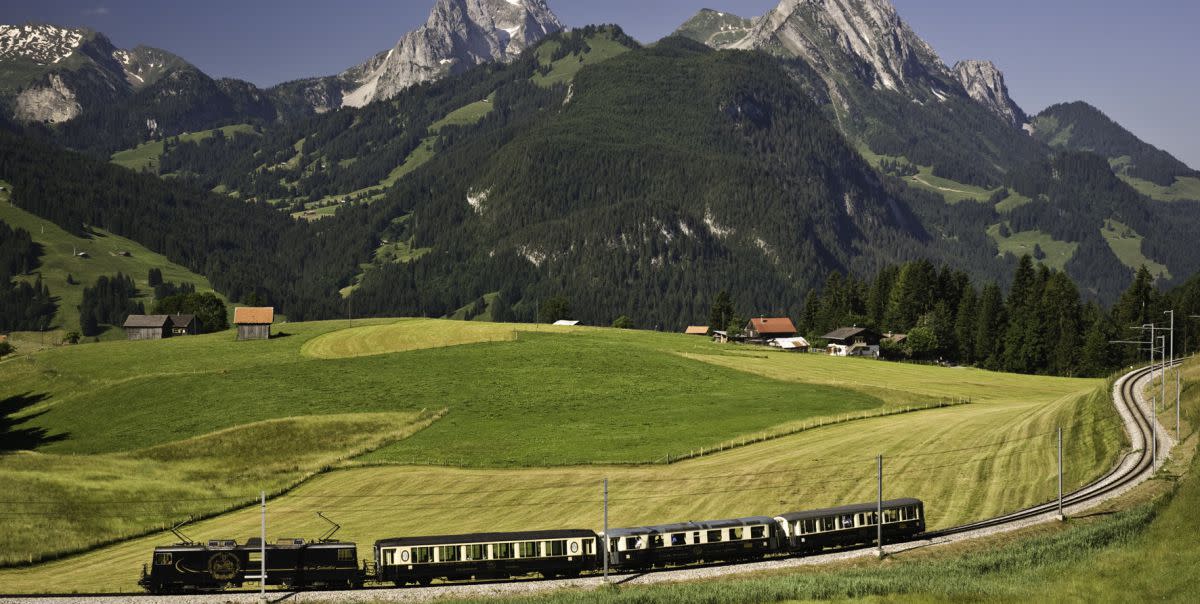
Conjure a mental image of Switzerland, and what do you see? Snowy peaks with skiiers shushing ever downwards, for sure, and sweet little villages laid like blankets among them, plus bubbling fondue pots and piles of fine chocolate bars — and perhaps a girl with braids guiding a goat to a beautiful green mountain vista. Look again and you’ll see trains careening between these towns, marvels of engineering that somehow blast through the bottoms of the Alps themselves. Those trains are the best and most fun way to see the country.
Like much of Europe, Switzerland has an incredible train system. Eighteen lines crisscross the country, which is tiny: around the size of Maryland, with a population smaller than New York City’s. Unlike other European trains, the Swiss cars are often panoramic, designed for passengers to take in the stunning landscape, especially in popular tourist areas; oversized windows curve into the ceilings, so passengers feel like cruising along in snowglobes. The only tough part of the experience is figuring out where to start. Here are a few ideas.

Which lines to look for
Again, you can’t go wrong with a train ride in Switzerland, but there are a few that whiz through particular gorgeous areas of the Alps. The Bernina Express has UNESCO World Heritage status due to its glorious high-altitude journey from Chur or Davos, through St. Moritz, into northern Italy. You’ll pass glaciers and ride along several dramatic viaducts (those super-high bridges with the insanely curved support systems below), and for one section, passengers can even sit in open-air cars to further enjoy the landscape. The GoldenPass takes you from Lake Lucerne to Lake Geneva, curving past four of the highest peaks of the Alps (13,000’+ each) while providing shimmering lake views.
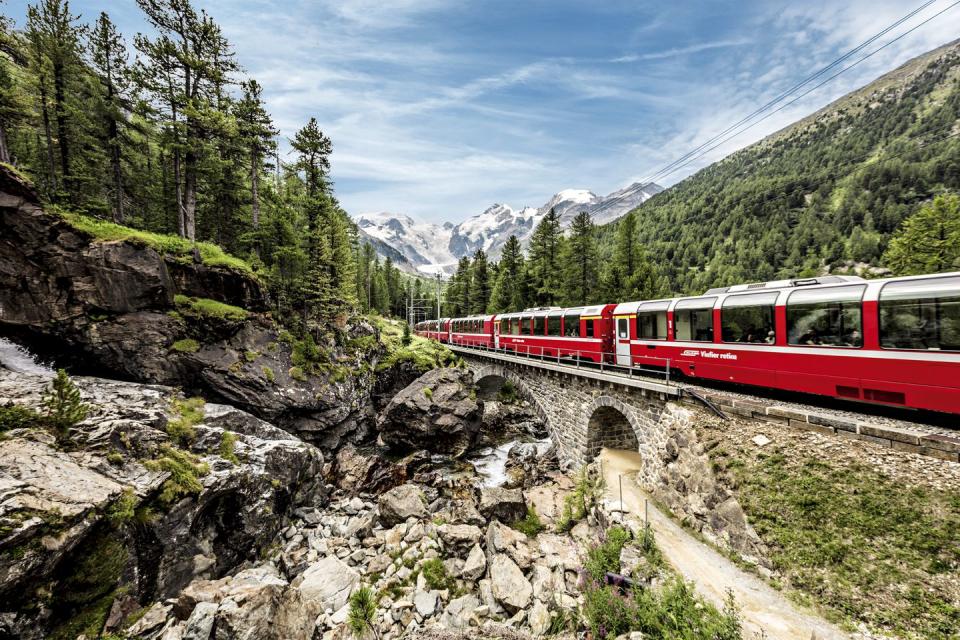
The Gornergrat bahn isn’t a regional train between cities, but is pretty cool: It links the town of Zermatt to a 10,100' peak for skiing and views of the world-famous Matterhorn. The first electric cogwheel railway in Switzerland, the Gornergrat was constructed during Victorian times, making it quite a landmark of engineering. Mark Twain wrote of the viewpoint’s majesty after a visit in 1878.
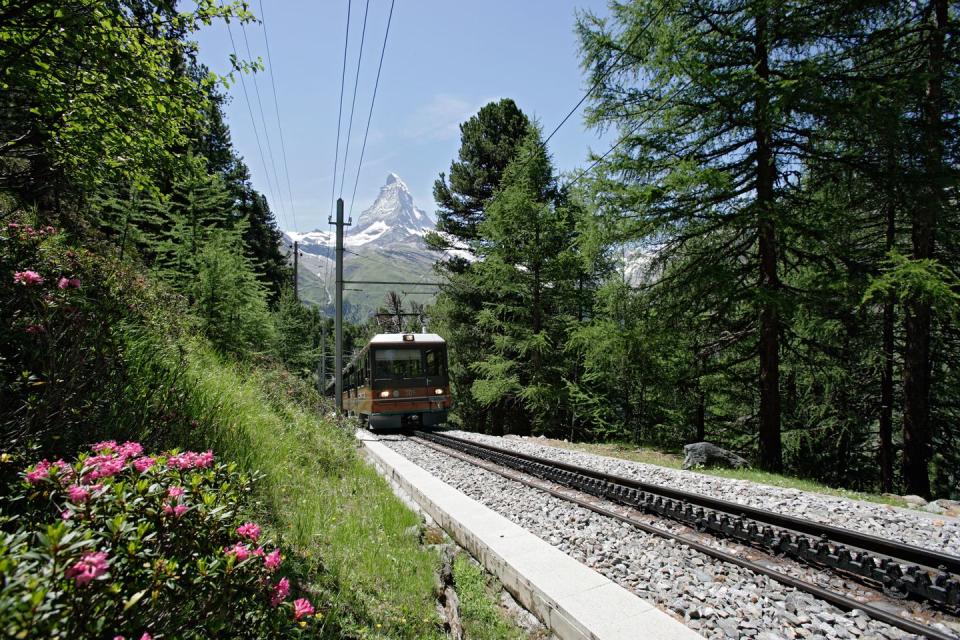
And if you’re really dedicated to this whole train thing, the Glacier Express is once-in-a-lifetime experience: the “slowest express train in the world,” an eight-hour ride between the ski havens of Zermatt and St. Moritz with unbelievable scenery and a possible luxurious upgrade to their Excellence Class, which comes with a multicourse fine-dining meal and white-glove service.
Where to stop
St. Moritz is the town that claims to have invented winter tourism; it’s the tony ski mecca where you can expect to see beautiful people carrying bottles of champagne back down the mountains. Zermatt is the more low-key ski town where cars aren’t allowed but the royals are; Prince William and Kate Middleton have been known to hit the slopes here with pals. Interlaken is an adventure paradise, where thrill-seekers can paraglide off mountains, or parasail, windsurf, and kayak on the nearby Lake Thun or Lake Brienz.
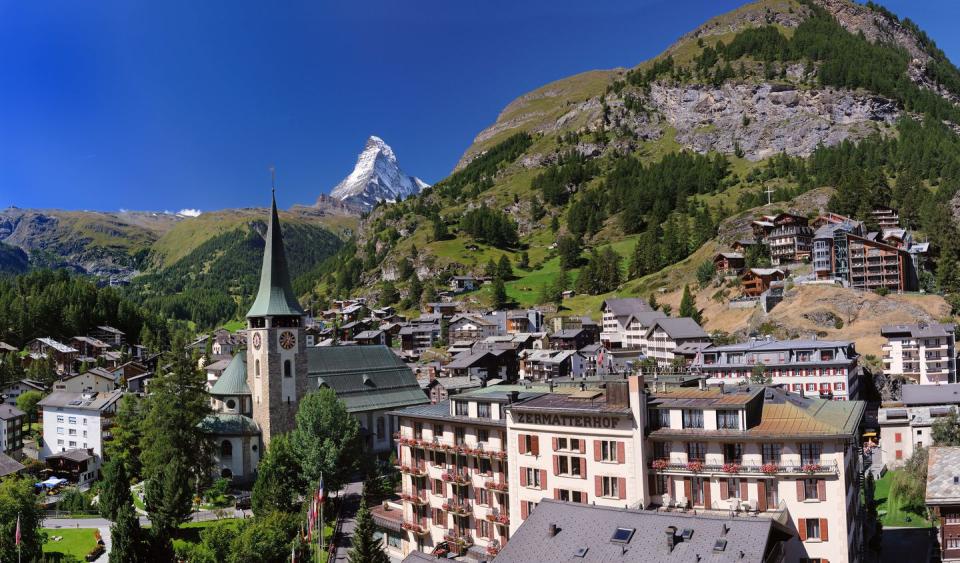
Zurich and Geneva are, of course, the chic, modern cities that you may have flown into to start your journey, and certainly deserve at least a day each to explore. Montreux, on the shores of Lake Geneva near the French border, is an unspeakably lovely town that Freddie Mercury called home for many years. It also boasts a castle and a jazz festival every July.
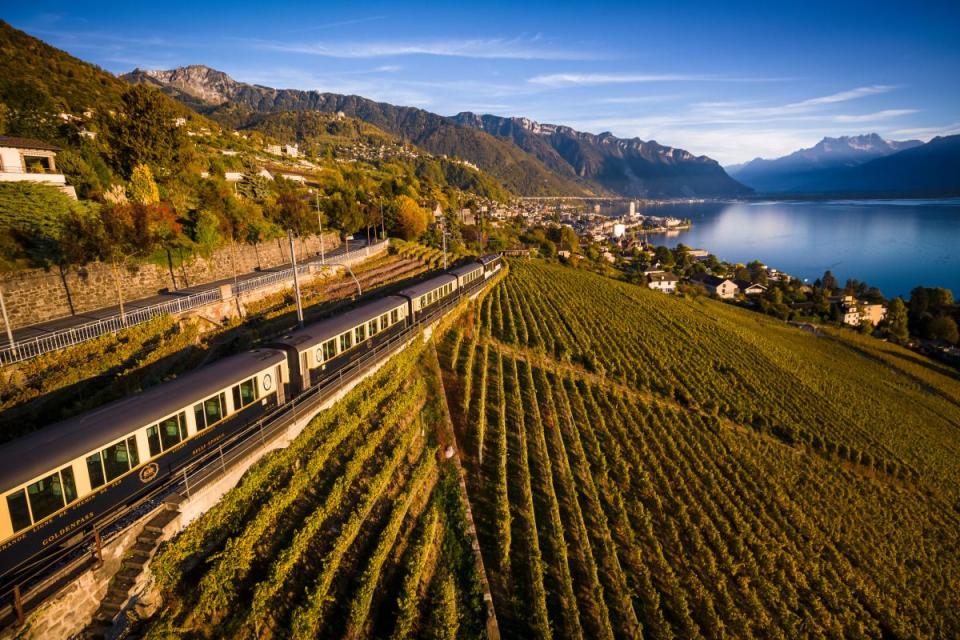
How to buy tickets
There are three types of train travel pass to purchase for unlimited rides around the country: a Swiss Travel Pass (set for 3, 4, 8, or 15 days of consecutive travel), the Swiss Travel Pass Flex (set for 3, 4, 8, or 15 days of selected travel days within a month), and the Swiss Half Fare Card (which gives you a 50% on travel for one month).
Rates depend on first- vs. second-class travel, and how many days you want. To give an idea of the most probable purchase for an American tourist, an eight-day consecutive train pass is around $663 in first class, $418 in second class. Young travelers up to age 26 get a 15% discount on train passes; kids under age 16 travel for free as long as they’re riding with a parent carrying a pass — a great deal for families.
There are also tour operators that package rail routes along with hotels and transfers. One such operator is Vacations By Rail, an American company that offers customizable train journeys through Switzerland depending on your budget.
When to ride
Okay, this one’s a bit of a cheat, because there are simply no bad times to train through Switzerland. Yes, the winter holds the alpine wonderland of your dreams, but the summer is a great time to take in lush green panoramas and appreciate the nation’s sparkly clear lakes. In autumn, the mountains light up as the trees change color; in spring, the valleys are carpeted in wildflowers.
('You Might Also Like',)

